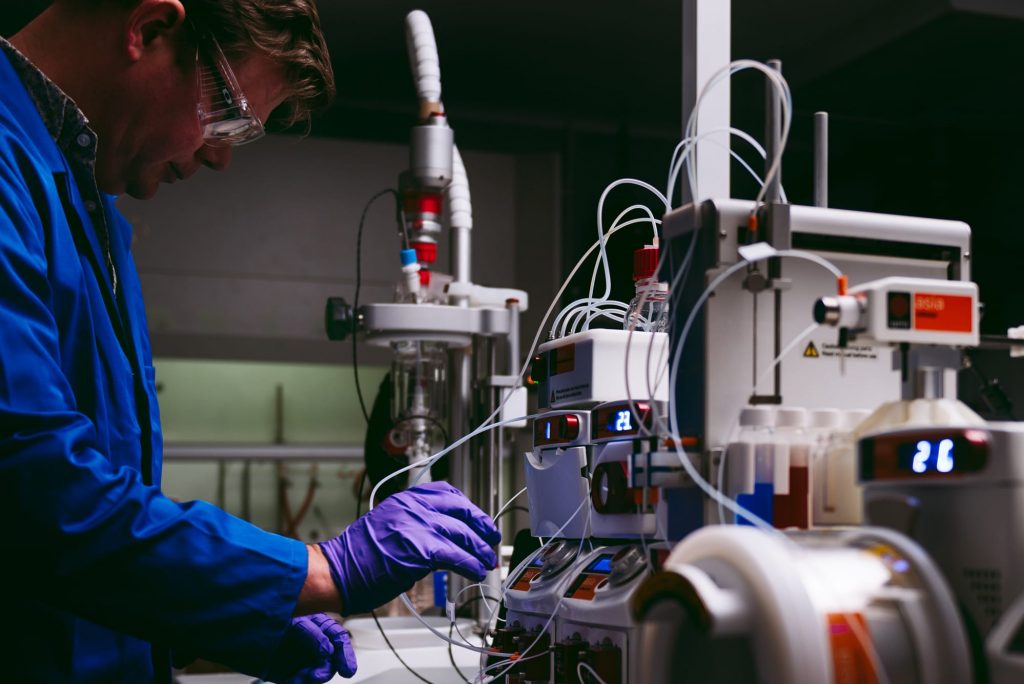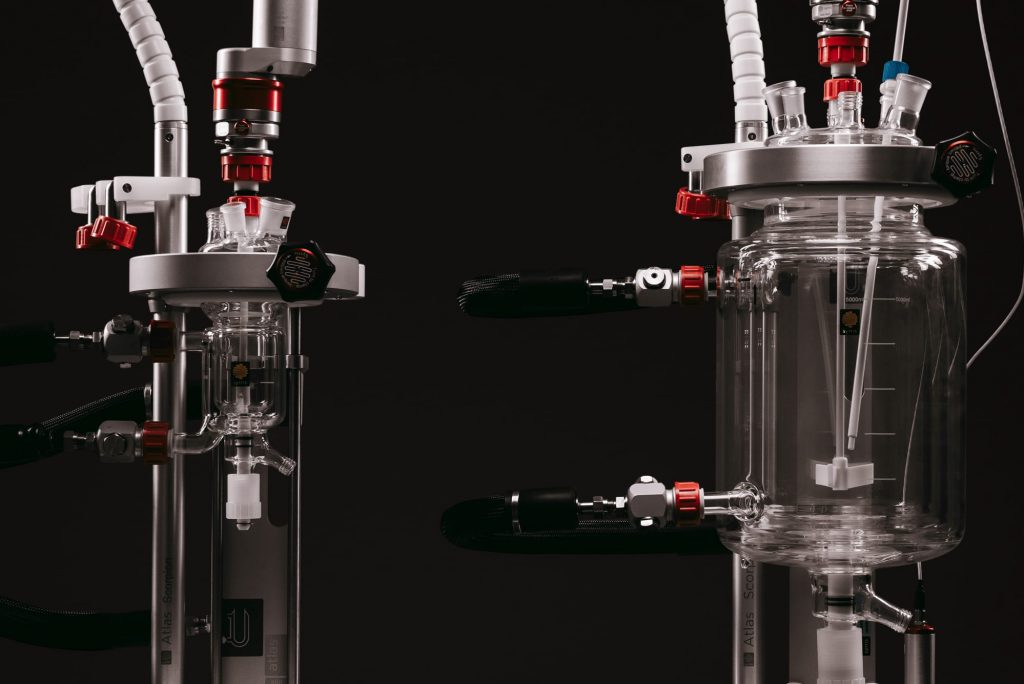What are the differences between flow chemistry and traditional batch chemistry?
Chemistry performed in a flow reactor can be used as a rapid screening tool to improve traditional batch chemistry.
Reactions performed in round-bottomed flasks (for example) are difficult and time-consuming to optimize. Asia offers a new way to optimize, by allowing many different reactions to be tested rapidly with very little reagent consumption in a microfluidic glass flow reactor.
We call the approach “BFB” – Batch to Flow to Batch optimization.
But do batch and flow chemistry conditions relate to each other?
Our validation work yields the following conclusions:
-
-
- Batch reaction time is comparable to flow reaction time under the same conditions
- Flow reaction time can be reduced very easily by pressurizing the flow stream with a Pressurization Module, read more about our offering with the Asia Pressurized Input Store Module.
- A reaction can be optimized in flow mode, and the results transferred back to batch
-
Some caveats must be noted, however:
-
-
- A batch reaction is generally subject to more variability from run to run than with flow
- Some batch reactions cannot be run in flow (e.g. reactions forming solid products)
- Some flow reactions cannot be performed in batch (e.g. using reactive intermediates)
-
Batch to Flow to Batch (BFB) is a rapid and productive tool for Method development and Reaction Optimization.
To find out more about flow chemistry, please continue reading our flow chemistry application pages, or visit our Flow Chemistry product pages, including the Asia flow chemistry systems and the Titan scale-up flow chemistry systems to learn about how performing reactions in flow can benefit you.
If you would like any further information about the benefits of flow chemistry, reaction optimization or how batch and flow reactions can relate to each other, please contact us.
Author: Syrris
Category: Applications

